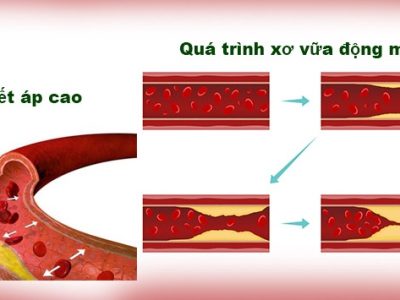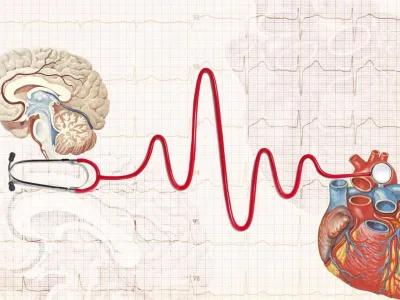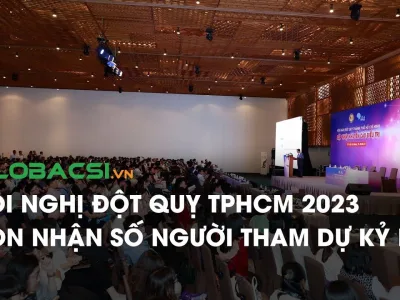Mối liên quan giữa nội mạc động mạch cảnh với bệnh động mạch vành cấp
- Thứ năm, 14 Tháng 12 2017 11:14
Huỳnh Kim Phượng* Nguyễn Hoàng Tài My**
* Khoa Chăm sóc Sức khoẻ theo yêu cầu – Bệnh viện Chợ Rẫy
** Khoa Tim mạch Can thiệp – Bệnh viện Chợ Rẫy
http://timmachhoc.vn/tong-hop-tu-nghien-cuu-tren-lam-sang/1396-gia-tri-do-day-lop-noi-trung-mac-dong-mach-canh-chung-doi-voi-chan-doan-benh-dong-mach-vanh-trong-hoi-chung-mach-vanh-cap.html
TÓM TẮT
Mở đầu:Đã có nhiều nghiên cứu khảo sát mối liên quan giữa độ dày lớp nội trung mạch (ĐDLNTM) động mạch (ĐM) cảnh với bệnh động mạch vành (ĐMV) nói chung, chúng tôi đặt vấn đề khảo sát độ dày nội trung mạc động mạch cảnh ở bệnh nhân (BN) hội chứng vành cấp (HCVC).
Mục tiêu: 1. Khảo sát ĐDLNTM ĐM cảnh chung trên BN HCVC. 2. Đánh giá liên quan giữa ĐDLNTM ĐM cảnh chung với mức độ tổn thương của ĐMV biểu hiện điểm Gensini trong HCVC. 3. Khảo sát giá trị của ĐDLNTM ĐMC chung trong chẩn đoán bệnh ĐMV.
Đốitượng và phương pháp nghiên cứu: Nghiên cứu (NC) tiến cứu cắt ngang, có phân tích, từ tháng 01/2017 đến tháng 04/2017. Tiến hành trên 98 BN được chẩn đoán HCVC điều trị tại Khoa Tim mạch Can thiệp bv Chợ Rẫy
Kết quả: Tuổi trung bình 61,8 tuổi; nam chiếm đa số 67,3%; BMI trung bình 23,3; ĐDLNTM ĐM cảnh chung 1,85; điểm Gensini 129,9. Sự khác biệt có ý nghĩa thống kê giữa tuổi TB và BMI trung bình hai giới (nữ>nam). Ghi nhận tương quan khá yếu giữa ĐDLNTM ĐM cảnh chung và điểm số Gensini (hệ số tương quan là 0,166 với p=0,1). Mối tương quan rõ giữa các nhóm ĐDLNTM ĐM cảnh chung (<0,9mm; 0,9-1,5mm; >1,5mm) và điểm Gensini. ĐDLNTM của ĐM cảnh chung có đường cong ROC=0,85; ĐDLNTM ĐM cảnh chung 1,22mm có độ nhạy 78,6% và độ đặc hiệu 73,4% đối với chẩn đoán bệnh ĐMV.
Kết luận: Độ dầy lớp nội trung động mạch cảnh chung có giá trị chẩn đoán bệnh ĐMV trong HCVC.
Từ khoá: hội chứng vành cấp (acute coronary syndrome), độ dày lớp nội trung mạc động mạch cảnh (carotid intima media thickness=CIMT), chỉ số Gensini (Gensini score)
Bảng 1. Đặc tính nhóm dân số nghiên cứu
| Đặc tính | Phân bố |
|
Tuổi (TB, ĐLC) Giới nam BMI Cân nặng Chiều cao Tăng huyết áp Đái tháo đường Rối loạn Lipid máu Hút thuốc lá ĐDLNTM ĐM cảnh chung Điểm Gensini |
61,8 (ĐLC 11,9) 66 (67,3%) 23,3 (1,9) 62,2 (ĐLC 5,23) 163,4 (ĐLC 7,8) 71 (72,4%) 18 (18,4%) 58 (59,2%) 66 (67,3%) 1,85 (ĐLC 0,7) 129,9 (ĐLC 40,5) |
ABSTRACT
THE ACCESSMENT OF COMMON CAROTID INTIMA-MEDIA THICKNESS FOR DIAGNOSING CORONARY ARTERY DISEASE IN THE PATIENT WITH ACUTE CORONARY SYNDROME
Background: There are many researches about correlation between carotid intima media thickening (CIMT) and coronary artery lesion relating to ischemic heart disease, the aim of this research on examining carotid intima media is to exam CIMT of acute coronary syndrome’s patients
Objective: 1. Accessing CIMT of acute coronary syndrome’s patients. 2. Correlation between CIMT and coronary artery lesion
Methods: The cross-sectional prospective analyzed study from January to April 2017. Examining 98 subjects diagnosed acute coronary syndromeat Interventional cardiology department- Cho Ray hospital.
Result:
Mean age 61,8; male 67,3%; mean BMI 23,3; common CIMT 1,85; mean Gensini score 129,9. Significant discrimination between mean age and mean BMI of male and female (female>male). Significant poor relation between common CIMT and Gensini score (correlation coefficients 0,166; p=0,1). Significant good correlation between common CIMT subgroups (<0,9mm; 0,9-1,5mm; >1,5mm) and Gensini score. CIMT of common carotid artery has ROC=0,85; with threshold 1.22(mm) CIMT has sensitivity 78,6% and specificity 73,4% for diagnosis coronary artery disease.
Conclusion:
IMT of common carotid artery is valuable for diagnosis of coronary artery disease.
* Khoa Chăm sóc Sức khoẻ theo yêu cầu – Bệnh viện Chợ Rẫy
** Khoa Tim mạch Can thiệp – Bệnh viện Chợ Rẫy
TÀI LIỆU THAM KHẢO
TIẾNG VIỆT
1. Võ Thị Kim Phương. (2004) “Khảo sát bề dày lớp nội trung mạc động mạch cảnh bằng siêu âm Duplex màu ở bệnh nhân bệnh động mạch vành”. Báo cáo nghiên cứu khoa học.
TIẾNG ANH
2. A. Kablak-Ziembicka, W Tracz, Et Al. (2004) “Association of increased carotid intima-media thickness with the extent of coronary artery disease”. Heart.90:p.1286–90.
3. Adam Mr., Nakagomi A., et al. (1995). «Association of increased carotod intima-media thickness with the extent of coronary artery disease». Circulation. 92, p.2127-34.
4. Agnieszka Drzewiecka−Gerber, Et Al. (2012) “Impact of atherosclerotic changes of carotid vessels on long−term outcome in relatively young patients with acute coronary syndrome”. Kardiologia Polska ; 70, 4: 343–349.
5. Hallerstam S., Larsson PT., Zuber E., Rosfors S. (2004) “Carotid Atherosclerosis is Correlated with extent and Severity of Coronary artery Disease Evaluated by Myocardial Perfusion Scintigraphy”. Angiology.5(3), p.281-8.
6. Kafetzakis A., Kochiadakis G., Laliotis A., Peteinarakis I., Touloupakis E., Igoumenidis N., Katsamouris A. (2005) “Association of Subclinical Wall Changes of Carotid, Femoral, and Popliteal Arteries With Obstructive Coronary Artery Disease in Patients Undergoing Coronary Angiography”. Chest.128, p.2538 –43.
7. Kalay N., Yarlioglues M., Ardic I., et al. (2010) ” The assessment of atherosclerosis on vascular structures in patients with acute coronary syndrome”. Clin Invest Med. 33(1), Feb.1, E36-43.
8. Korkmaz1 L., Adar A., Korkmaz AA., Erkan H., Agac MT., Acar Z., Kurt IH., Akyuz AR., Celik S. (2012) “Atherosclerosis burden and coronary artery lesion complexity in acute coronary syndrome patients”. Cardiology Journal, 19(3), p. 295–300.
9. Mohammad K. Tarzamni, Rezvanieh S., Farhad G., Sara F. (2006) “Association of carotid intima-media thickness with the presence and severity of coronary artery disease”. Neurosciences.11(4), p.308-311.
10. Steinvil A., Sadeh B., Arbel Y., Justo D., et al. (2011) “Prevalence and Predictors of Concomitant Carotid and Coronary Artery Atherosclerotic Disease”. Journal of the American College of Cardiology. 57(7), p.779-83.
11. Vijay N., Lloyd C., Max He, Aaron R. F., Tom M., Eric B., and Christie M.B. (2012) “Common carotid artery intima–media thickness is as good as carotid intima–media thickness of all carotid artery segments in improving prediction of coronary heart disease risk in the Atherosclerosis Risk in Communities (ARIC) study”. European Heart Journal, 33, p.183-190.














